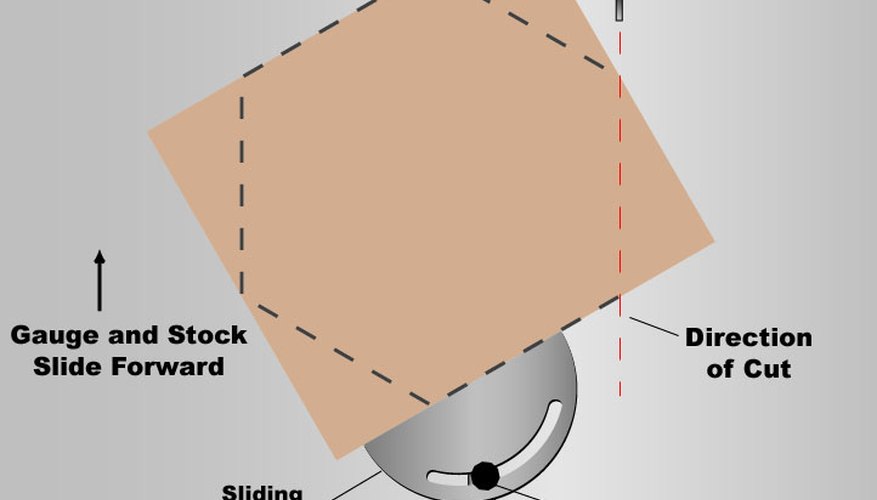If you have a project that requires accurately sized and proportioned hexagons, follow these steps for a precise method to draw a symmetrical hexagon and use a sliding mitre gauge to ensure that the hexagon's sides are cut precisely at the correct angles. Click on the thumbnail diagrams to enlarge them.
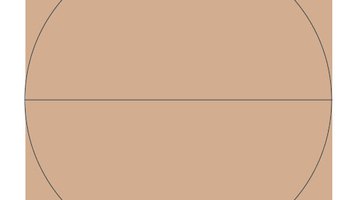
Set up the stock you are cutting on a flat work surface to draw out the hexagon. If the stock is a single, solid piece of wood, orient it so that the grain of the wood runs vertically. Draw a circle on your stock, sized so that the hexagon you want to cut will fit inside it exactly. Measure and mark a line that divides the circle exactly in half horizontally.
- If you have a project that requires accurately sized and proportioned hexagons, follow these steps for a precise method to draw a symmetrical hexagon and use a sliding mitre gauge to ensure that the hexagon's sides are cut precisely at the correct angles.
- Draw a circle on your stock, sized so that the hexagon you want to cut will fit inside it exactly.
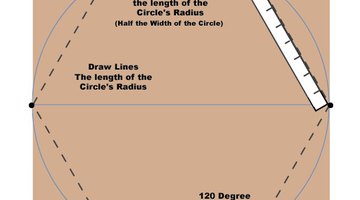
Measure the radius of the circle, which is half of the circle's width. Make a mark at the endpoint of the dividing line and measure with the radius length from that point across the inside edge of the circle, intersecting the circle at the next point, as shown in the diagram. Mark six points around the edge of the circle using the same measurement. Connect the points with lines to form the complete hexagon shape.
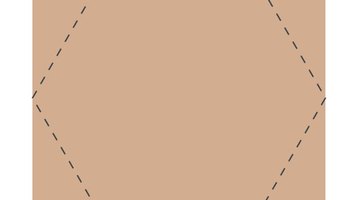
Make cuts along the top and bottom edges of the hexagon, using the table saw fence to assist in making straight 90 degree crosscuts. The remaining four side edges will be trimmed using the mitre gauge.
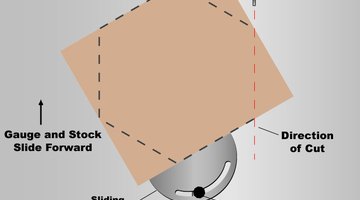
Set the mitre gauge at a 30 degree angle, to the left of centre. Place one of the previously crosscut edges along the mitre gauge and align the mark for the next side you are cutting to the saw blade. Slide the mitre gauge, with the stock in place, forward toward the saw blade and trim the edge.
Rotate the hexagon stock clockwise so that the edge you just cut is aligned on the mitre gauge. Position the stock to cut along the next marked edge. Slide the mitre gauge, with the stock in place, forward toward the saw blade, and trim the edge.
- Rotate the hexagon stock clockwise until the second side that was previously crosscut is aligned with the mitre gauge.
- Position the stock to cut along the next marked edge.
- Make cuts along the top and bottom edges of the hexagon, using the table saw fence to assist in making straight 90 degree crosscuts.
- Rotate the hexagon stock clockwise so that the edge you just cut is aligned on the mitre gauge.
Rotate the hexagon stock clockwise until the second side that was previously crosscut is aligned with the mitre gauge. Position the stock to cut along the next marked edge. Slide the mitre gauge, with the stock in place, forward toward the saw blade, and trim the edge.
- Rotate the hexagon stock clockwise until the second side that was previously crosscut is aligned with the mitre gauge.
- Position the stock to cut along the next marked edge.
Make the final cut to trim the last remaining edge by rotating the hexagon stock clockwise so that the edge you just cut is aligned on the mitre gauge. Position the stock to cut along the next marked edge. Slide the mitre gauge, with the stock in place, forward toward the saw blade, and trim the edge. Your hexagon is complete.
- Rotate the hexagon stock clockwise until the second side that was previously crosscut is aligned with the mitre gauge.
- Position the stock to cut along the next marked edge.
